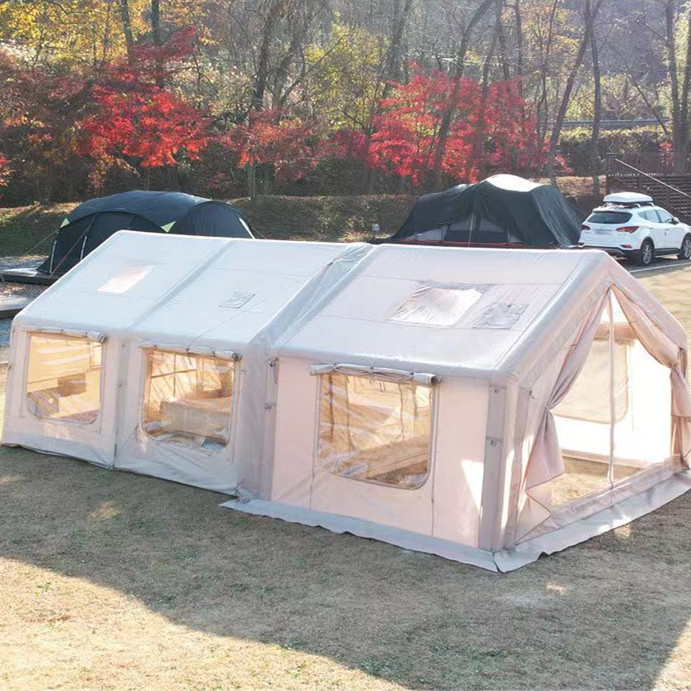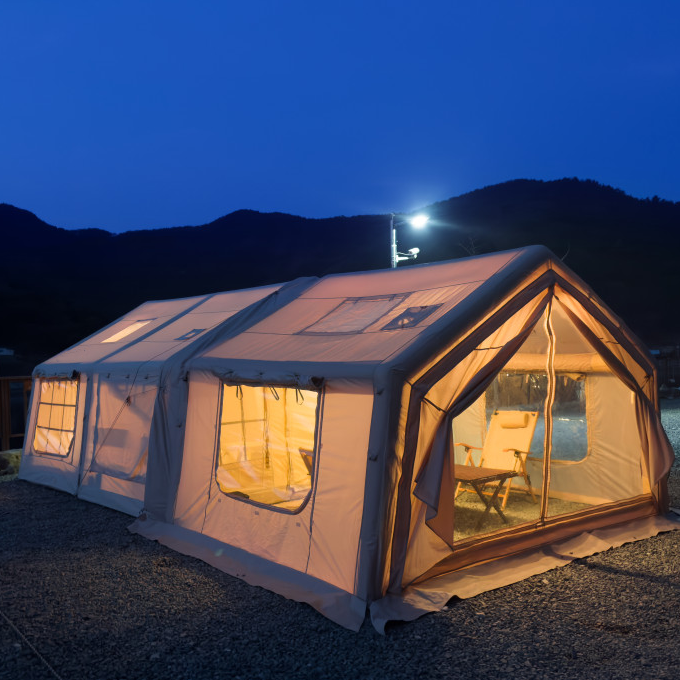Quick and Easy Setup
One of the main advantages of inflatable tents is their rapid and hassle-free setup. Unlike traditional tents that rely on poles, inflatable tents use air beams, allowing you to inflate the structure in just minutes. This is especially beneficial for beginners, as it eliminates the frustration often associated with tent assembly. With a quick setup, you can spend more time relaxing and enjoying the outdoors.
Portability and Lightweight Design
Inflatable tents are designed with portability in mind. Without rigid poles, they are lighter and easier to transport, making them ideal for those who prioritize convenience. Whether you're backpacking to a remote location or simply moving your tent around a campsite, their reduced weight enhances maneuverability, especially for those new to camping.
Durable and Weather-Resistant
Many inflatable tents are made from sturdy materials that offer durability and excellent weather resistance. The air beams, typically constructed from reinforced materials, provide a stable and reliable structure. Additionally, waterproof coatings and well-designed seams ensure that these tents can withstand rain and other challenging conditions, giving you peace of mind in unpredictable weather.
Versatility in Design
Inflatable tents come in a variety of designs and sizes to accommodate different camping needs. Whether you're a solo camper or a family, there's likely an inflatable tent that fits your requirements. Many models feature multiple rooms, vestibules, or modular designs, allowing for flexibility and customization to enhance your camping experience.
Comfortable Interior Space
Inflatable tents often offer spacious interiors with straighter walls and increased headroom compared to some traditional tents. This design allows for a more comfortable living space, making it easier to move around and store your gear inside.
Cons of Inflatable Tents for Camping:
Vulnerability to Punctures
While inflatable tents are generally durable, they can be susceptible to punctures and tears. Care is needed during setup and takedown to avoid sharp objects or rough terrain.
Requires Proper Maintenance
Inflatable tents require special care, including proper storage and maintenance. If not stored correctly, they may become damaged over time, leading to costly repairs or replacements.
Inflation Equipment Needed
Inflatable tents require a pump for setup, which adds to the gear you need to carry. If the pump fails or is lost, setting up the tent can become problematic.
Less Sturdiness in High Winds
In very windy conditions, inflatable tents may not be as stable as traditional pole tents. It's important to secure them properly with pegs and guy lines to ensure safety during adverse weather.

Cons of a Blow-Up Tent for Camping:
Initial Cost
One of the main drawbacks of inflatable tents is their higher initial cost compared to traditional pole tents. While the technology and materials contribute to their convenience and durability, this often means a steeper price tag. If you're unsure about your long-term commitment to camping, the upfront investment may be a key factor when weighing your options.
Potential for Puncture
Despite advancements in durability, inflatable tents can still be susceptible to punctures or damage to the air beams. Careful consideration of the terrain is essential to avoid sharp objects that could compromise the tent. While many models include repair kits, fixing a puncture during a trip can be challenging, especially for those new to using inflatable tents.
Dependency on Pump Mechanism
Inflatable tents require a pump for setup, and the efficiency of this process hinges on the quality of the pump. Electric pumps can speed up inflation but need a power source, which may not be accessible in remote areas. Manual pumps can be cumbersome and time-consuming, especially for those not accustomed to the physical effort involved.
Considering these factors is crucial when determining if an inflatable tent aligns with your camping needs, budget, and preferences.
